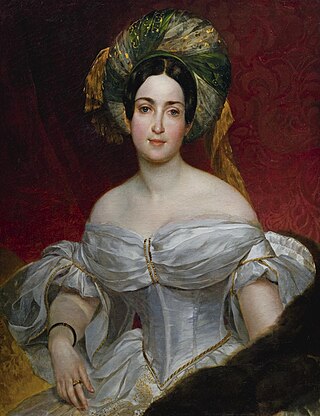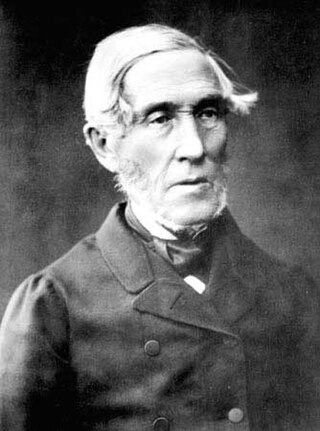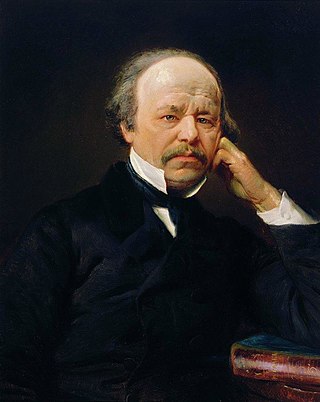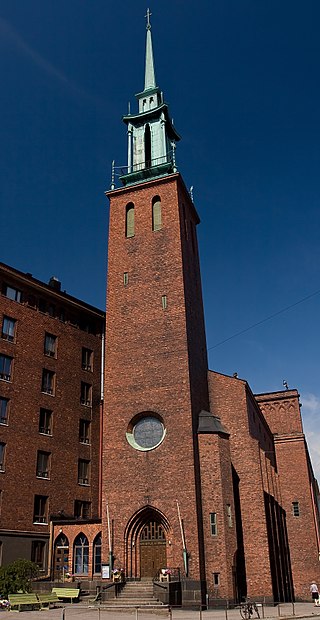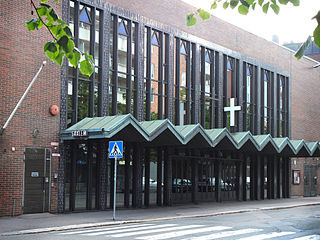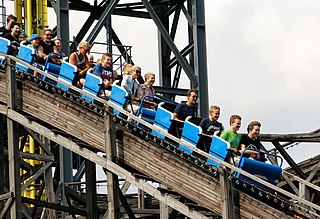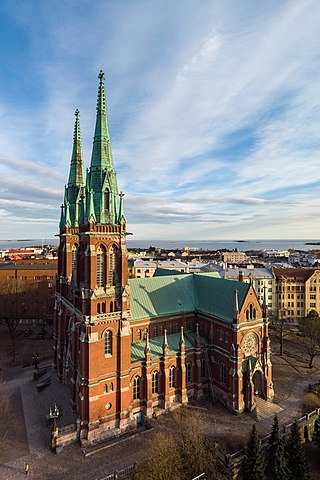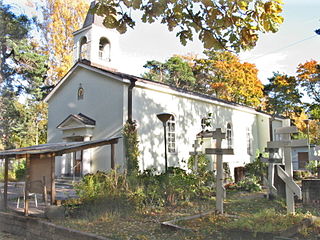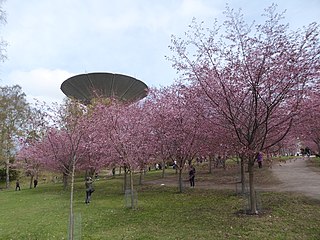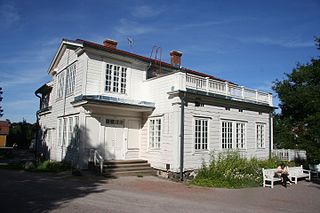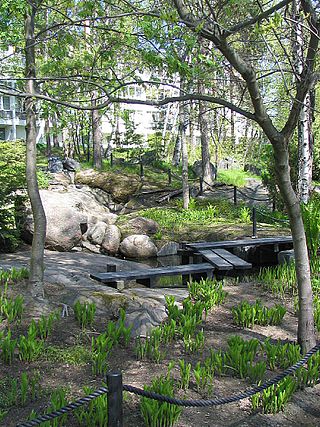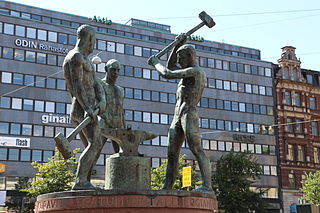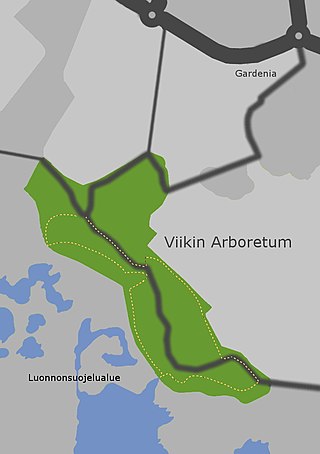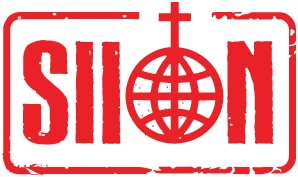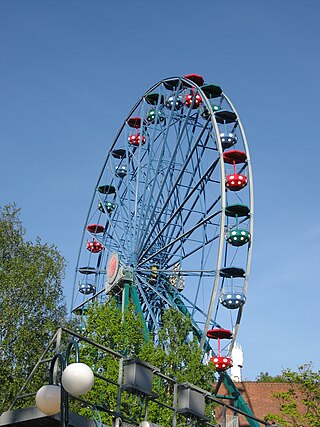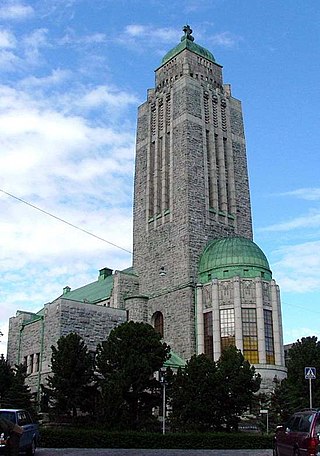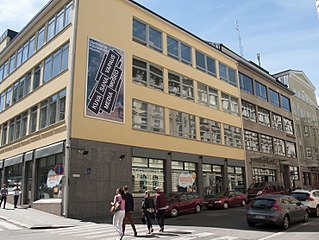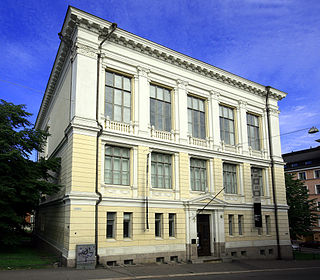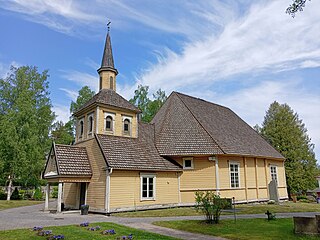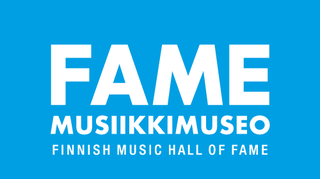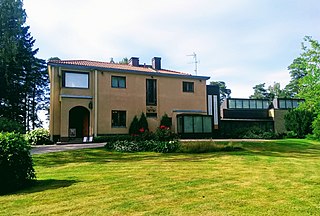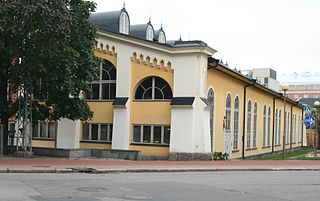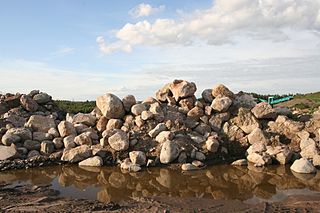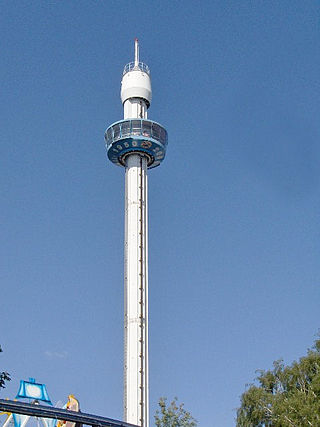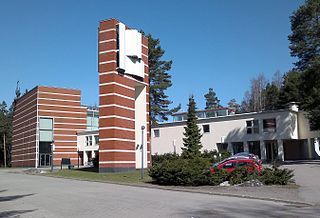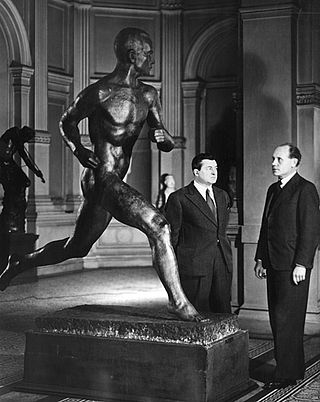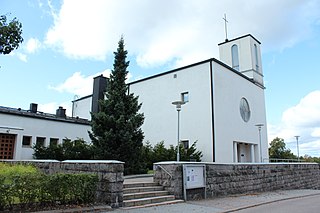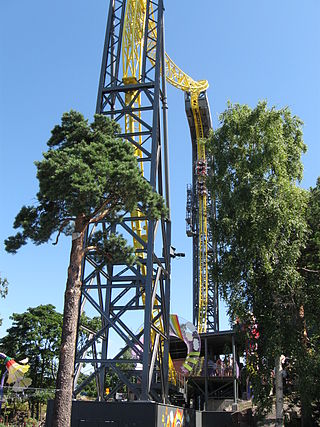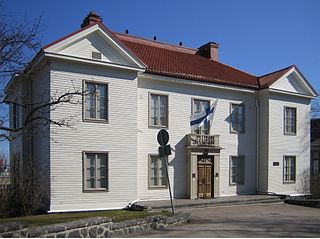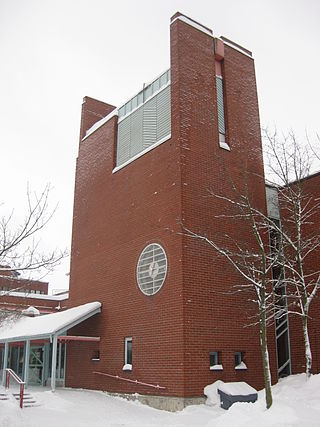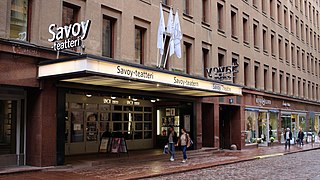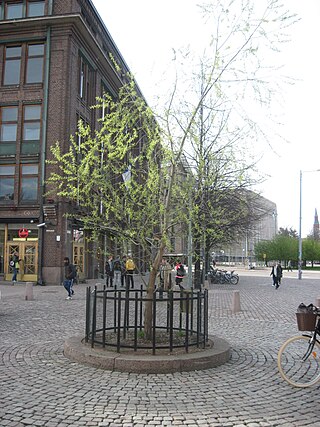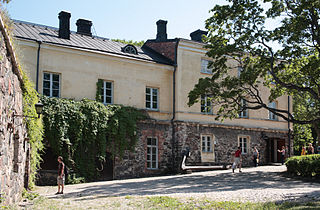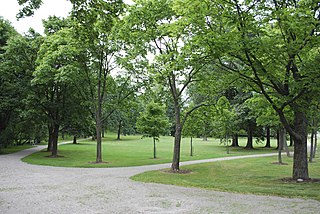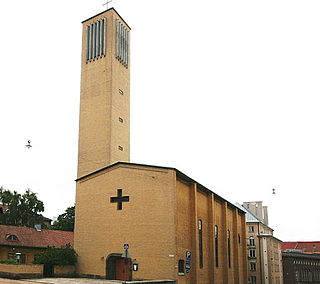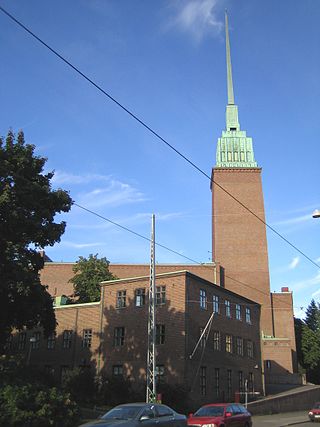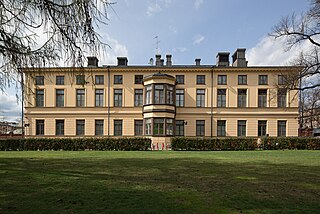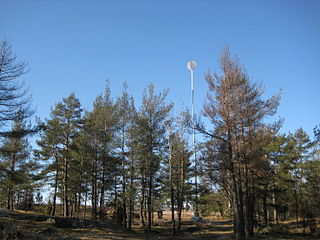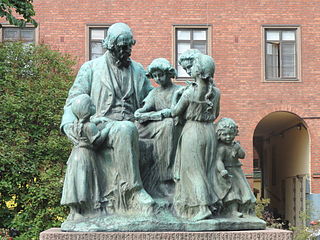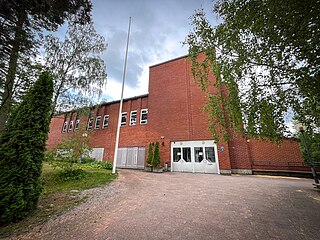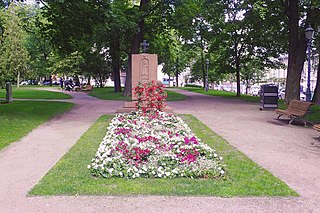100 Sights in Helsinki, Finland (with Map and Images)
Legend
Premium Sights
Book tickets, guided tours and activities in Helsinki.
Guided Free Walking Tours
Book free guided walking tours in Helsinki.
Welcome to your journey through the most beautiful sights in Helsinki, Finland! Whether you want to discover the city's historical treasures or experience its modern highlights, you'll find everything your heart desires here. Be inspired by our selection and plan your unforgettable adventure in Helsinki. Dive into the diversity of this fascinating city and discover everything it has to offer.
Sightseeing Tours in HelsinkiActivities in HelsinkiCentral Park is a park in Helsinki, Finland. It has an area of 10 square kilometres (4 sq mi). The park stretches 10 kilometres (6 mi) from Töölönlahti Bay in the south to the border of Helsinki and Vantaa in the north.
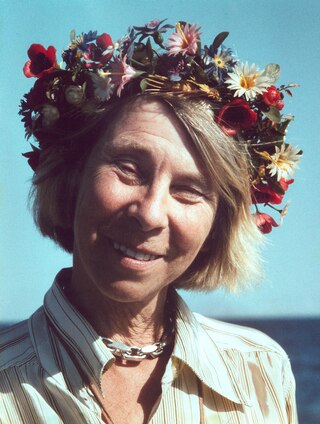
Tove Marika Jansson was a Finnish author, novelist, painter, illustrator and comic strip author of Swedish descent. Brought up by artistic parents, Jansson studied art from 1930 to 1938 in Helsinki, Stockholm, and Paris. She held her first solo art exhibition in 1943. Over the same period, she penned short stories and articles for publication, and subsequently drew illustrations for book covers, advertisements, and postcards. She continued her work as an artist and writer for the rest of her life.
The Finlandia Hall is a congress and event venue in the centre of Helsinki on the Töölönlahti Bay, owned by the City of Helsinki. The building, which was designed by architect Alvar Aalto, was completed in 1971. Every detail in the building is designed by Aalto. The designs were completed in 1962, with building taking place between 1967 and 1971. The Congress Wing was designed in 1970 and built in 1973–1975. In 2011, the building was expanded with new exhibition and meeting facilities. Finlandia Hall is known as the venue for the OSCE Summit held in August 1975, attended by 35 world leaders, including the leader of the Soviet Union, Leonid Brezhnev, and the President of the United States, Gerald Ford.
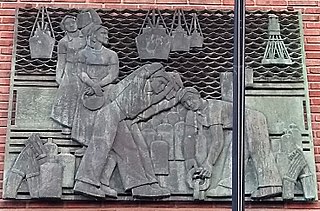
The Port is a relief made by sculptor Eino Räsänen in Jätkäsaari, Helsinki. The relief depicts two women, one carrying heavy objects on her shoulder, the other with her hands. In the center are three bent men, two of whom carry sacks on their backs. One man lifts the chain used to moor the ship. At the bottom right and left are dishes and other objects, in the background are four ships and a lighthouse.
Ateneum is an art museum in Helsinki, Finland and one of the three museums forming the Finnish National Gallery. It is located in the centre of Helsinki on the south side of Rautatientori square close to Helsinki Central railway station. It has the biggest collections of classical art in Finland. Before 1991 the Ateneum building also housed the Finnish Academy of Fine Arts and University of Art and Design Helsinki.
Design Museum is a museum in Helsinki devoted to the exhibition of both Finnish and foreign design, including industrial design, fashion, and graphic design. The building is situated in Kaartinkaupunki, on Korkeavuorenkatu Street, and is owned by the Republic of Finland through Senate Properties. The building was completed in 1895 and originally built as a school building for the Swedish school Läroverket för gossar och flickor.
Shipwrecked is a bronze sculpture in Helsinki's Tähtitorninmäki district, Ullanlinna. Unveiled in 1898, the work was designed by sculptor Robert Stigell. The work was cast in Paris, where Stigell also finished his sculptures. The height of the work is 4.5 metres, but with the granite pedestal the height rises to six metres. The stand was manufactured in Hanko.
Linnanmäki is an amusement park in Helsinki, Finland. It was opened on 27 May 1950 and is owned by the non-profit Children's Day Foundation, which operates the park to raise funds for Finnish child welfare work. In 2023, the foundation donated €4.5 million, and so far has donated a total of over €130 million to this cause.
Helsinki Cathedral is the Finnish Evangelical Lutheran cathedral of the Diocese of Helsinki, located in the neighborhood of Kruununhaka in the centre of Helsinki, Finland, at the Senate Square. The church was originally built from 1830 to 1852 as a tribute to the Grand Duke of Finland, Emperor Nicholas I of Russia. It was also known as St Nicholas's Church until Finland declared its full independence in 1917. It is a major landmark of the city, and one of the most famous historical structures in Finland as a whole when viewed globally.
Esplanadi, colloquially known as Espa, is an esplanade and urban park in downtown Helsinki, Finland, situated between the Erottaja square and the Market Square. It is bordered on its northern and southern sides by the Pohjoisesplanadi and Eteläesplanadi streets, respectively. Aleksanterinkatu runs parallel to Esplanadi. Esplanadi is well known as a popular walking area, and street performances are also often held in the park.
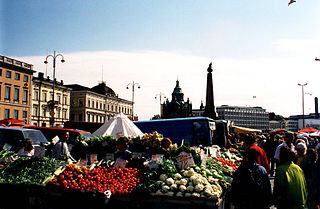
The Market Square is a central square in Helsinki, Finland. It is located in central Helsinki, at the eastern end of Esplanadi and bordering the Baltic Sea to the south and Katajanokka to the east. HSL maintains a year-round ferry link from Market Square to Suomenlinna, and in the summer there are also private companies providing ferry cruises, both to Suomenlinna and to other nearby islands. The Presidential Palace, Helsinki City Hall, Swedish Embassy and the Stora Enso Headquarters building are all located adjacent to Market Square.
Helsinki City Museum is a museum in Helsinki that documents and displays the history of Helsinki, the capital of Finland. Its mission is to record and uphold Helsinki's spiritual, material and architectural heritage. The museum features personal memories and everyday life of the city's residents. It also acts as the regional museum for central Uusimaa with a mission to promote and steer museum activities in the region.
Uspenski Cathedral is a Greek Orthodox or Eastern Orthodox cathedral in Helsinki, Finland, and main cathedral of the Orthodox Church of Finland, dedicated to the Dormition of the Theotokos. Its name comes from the Old Church Slavonic word uspenie, which denotes the Dormition. It is the largest Greek Orthodox church in both Northern and Western Europe.
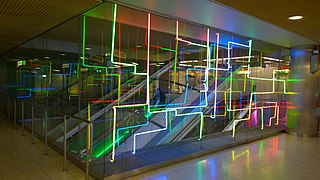
Verkko is a spatial installation by Annikki Luukela at the University of Helsinki metro station in Helsinki. The work starts in the glass cabinet on the upper platform of the station and continues to the platform level along the wall of the escalator. In addition, it includes neon and holographic works in quay-level display cases. The network is made of a colored neon light tube, which has been used for a total of more than a hundred meters. The work was completed in 1995, when the station was opened under the name Kaisaniemi metro station.
The Old Market Hall is the oldest market hall in Helsinki, Finland. It is located along the Eteläranta street near the Helsinki Market Square in the Kaartinkaupunki district. By 2013, the hall had also become a popular tourist attraction.
The Suomenlinna Church in Helsinki, Finland, was built in 1854 as an Eastern Orthodox garrison church for the Russian troops stationed at the Suomenlinna sea fortress. The fortress comprises five islands joined together by bridges, and the church is the central feature on the island of Iso Mustasaari, located at its highest point. It is surrounded by other fortress buildings, but the old parade ground is immediately to the east, and a park lies immediately to the south. It is oriented southwest to northeast so that it would align with the Crownwork Ehrensvärd defense front located to the southwest of the church.
The Military Museum of Finland is the central museum of the Finnish Defence Forces and the national special museum of military history. It is located in Helsinki and it is part of the Finnish National Defence University. In 2018, the Military Museum's exhibitions in Suomenlinna had around 131,000 visitors. The most popular exhibition is the submarine Vesikko, visited by around 50,000 people annually. Military Museum's exhibitions in Suomenlinna are located at Manege and Artillery Maneage.
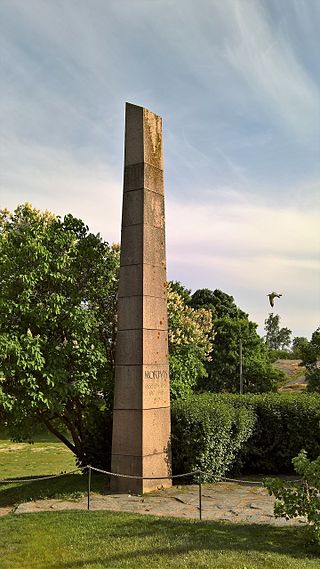
Mortuis is a memorial stone located in Suomenlinna, on the eastern edge of Piper Park. The obelisk-like stone, designed by architect Elsi Borg, was erected in 1951 to commemorate those who died in various disasters.
The Statue of Johan Ludvig Runeberg is a statue dedicated to the Finland-Swedish author, national poet and priest Johan Ludvig Runeberg (1804–1877), designed and sculpted by his son Walter Runeberg (1838–1920). The statue is located in the Esplanadi park in Helsinki.
Temppeliaukio Church is a Lutheran church in the Töölö neighbourhood of Helsinki, Finland. The church was designed by architects and brothers Timo and Tuomo Suomalainen and opened in 1969. Built directly into solid rock, it is also known as the Church of the Rock and Rock Church.
The Kamppi Chapel is a chapel in the neighbourhood of Kamppi in Helsinki, Finland, located on the Narinkka Square. It is also known as the "Chapel of Silence" since it is intended to be a place to calm down and have a moment of silence in one of the busiest areas of the city.
22. Akseli Gallen Kallela
Akseli Gallen-Kallela was a Finnish painter who is best known for his illustrations of the Kalevala, the Finnish national epic. His work is considered a very important aspect of the Finnish national identity. He finnicized his name from Gallén to Gallen-Kallela in 1907.
23. Sakari Topelius
Zacharias Topelius was a Finnish author, poet, journalist, historian, and rector of the University of Helsinki who wrote novels related to Finnish history. He wrote his works exclusively in Swedish, although they were translated early on into Finnish.
24. Aurora Karamzina
Eva Aurora Charlotta Karamzin was a Finnish philanthropist. Her better-known names are Princess Aurora Demidova and Aurora Karamzin, titles that were acquired after her first and second marriages, respectively.
25. J. V. Snellman
Johan Vilhelm Snellman was an influential Fennoman philosopher and Finnish statesman, ennobled in 1866. He was one of the most important 'awakeners' or promoters of Finnish nationalism, alongside Elias Lönnrot and J. L. Runeberg.
26. Natural History Museum
A natural history museum or museum of natural history is a scientific institution with natural history collections that include current and historical records of animals, plants, fungi, ecosystems, geology, paleontology, climatology, and more.
27. Havis Amanda

Havis Amanda is a fountain and a statue in Helsinki, Finland by the sculptor Ville Vallgren (1855–1940). The work was modelled in 1906 in Paris, and erected at its present location at the Market Square in Kaartinkaupunki in 1908. Today it is recognized as one of the most important and beloved pieces of art in Helsinki.
28. Stone Visitor
The Stone Guest is an opera in three acts by Alexander Dargomyzhsky from a libretto taken almost verbatim from Alexander Pushkin's 1830 play of the same name which had been written in blank verse and which forms part of his collection Little Tragedies.
29. Kristuskyrkan
Kristuskyrkan is a Christian church in Helsinki, Finland, located in the central district of Etu-Töölö at the corner between Fänrik Ståls Street and Apollonkatu Street. It was built at the beginning of the twentieth century and it is part of the Swedish Methodist Church of Finland.
30. Helsingin Saalem
Salem Church in Helsinki is a Pentecostal church located in Helsinki, Finland. Salem Church was founded in 1928. Today, Salem Church is the largest Pentecostal church in Finland with approximately 3,500 members. The congregation meets at the Salem Temple in Näkinkuja, Hakaniemi. Since October 2022, branch president has been Stefan Sigfrids. Salem Church is a member of the Pentecostal Church of Finland.
Wikipedia: Helsingin Saalem-seurakunta (FI), Website, Website
31. The Finnish Museum of Photography
The Finnish Museum of Photography is the national museum responsible for photography, located at the Cable Factory in Helsinki. The museum has exhibition space K1 as a branch office in the Kämp Gallery. The museum's mission is to promote and nurture Finnish photographic art and culture. Founded on the initiative of photographic organizations, the museum began its activities in 1969. The museum is maintained by the Foundation of the Finnish Museum of Photography. In 2019, a total of 31,306 visitors visited the museum, of whom 10,885 received a free visit and 20,421 paid an entrance fee.
32. Finnish National Opera
The Finnish National Opera and Ballet is a Finnish opera company and ballet company based in Helsinki. It is headquartered in the Opera House on the coast of the Töölönlahti bay in Töölö, which opened in 1993, and is state-owned through Senate Properties. The Opera House features two auditoriums, the main auditorium with 1,350, seats and a smaller studio auditorium with 300–500 seats.
33. Finnish National Theatre
The Finnish National Theatre, established in 1872, is a theatre located in central Helsinki on the northern side of the Helsinki Central Railway Station Square. The Finnish National Theatre is the oldest Finnish speaking professional theatre in Finland. It was known as the Finnish Theatre until 1902, when it was renamed the Finnish National Theatre.
34. Pikajuna
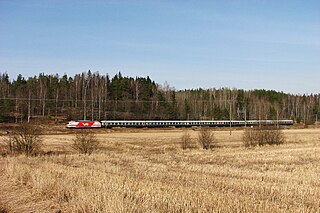
Express trains in Finland meant a faster connection than commuter and suburban trains, which has mainly stopped only at medium-sized and larger stations. The distance between stations by high-speed trains has typically been around 50–100 kilometres. In the timetables, express trains were marked with the P symbol. In 2024, express trains were removed from Finnish railways when night express trains became known as night trains.
35. Vuoristorata
Vuoristorata is a classic wooden roller coaster located at the Linnanmäki amusement park in Helsinki, Finland. It was built in the winter of 1950 by Linnanmäki's staff on the basis of drawings by Valdemar Lebech, a Danish builder specialising in fairground rides. The construction work was led by the Danish ride operator Svend Jarlström, who at the time owned most of Linnanmäki's rides. Opened on 13 July 1951, Vuoristorata was the largest roller coaster in the Nordic countries and the tallest in Europe at the time. Expected to last up to 15 years, it was originally designed as a temporary attraction for the amusement park, opened in 1950. One of the main reasons for its construction was to attract tourists from the 1952 Summer Olympics held in the city. Since then, its temporary status was renewed for extended periods, until it was eventually regarded as a permanent structure.
36. St. Henry's Cathedral
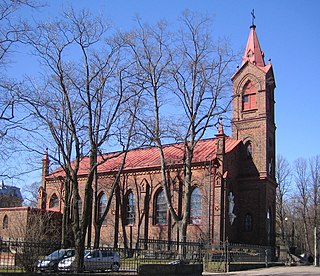
St. Henry's Cathedral is a Catholic cathedral in Helsinki, Finland, dedicated in honor of Bishop Henrik, a 12th-century Bishop of Turku. It is the cathedral church of the Diocese of Helsinki. In terms of membership, the cathedral is the largest in Finland, with approximately 5,000 members.
37. St. John's Church
St. John's Church in Helsinki, Finland, is a Lutheran church designed by the Swedish architect Adolf Melander in the Gothic Revival style. It is the largest stone church in Finland by seating capacity.
38. Pyhän Nikolauksen kirkko
St. Nicholas Parish in Helsinki is an Orthodox religious community operating mainly in Helsinki. The congregation has 2,400 members (2012). You can belong to a community without a domicile in Finland, and approximately 30 per cent of its members are other than Finnish citizens. The parish does not belong to the Finnish Orthodox Church but to the Russian Orthodox Church, i.e. the Moscow Patriarchate.
39. Amos Rex
Amos Rex is an art museum named after the publisher and arts patron Amos Anderson and located in Lasipalatsi, on Mannerheimintie boulevard in Helsinki, Finland. It opened in 2018 and rapidly reached international popularity, attracting more than 10,000 visitors in a matter of weeks.
40. Kirsikkapuisto
Kirsikkapuisto opened in 2007 in the Roihuvuori district of Helsinki, and is part of the Roihuvuori green area. The southern area has a fenced off dog park. In the dog park are wooden statues of dogs and a tree with a cat in it. The city department that maintains these statues has now closed and the statues are being removed as they deteriorate. There are about 150 Cherry trees in the park that were planted following sponsorship from the Japanese community in Helsinki. In the Spring the Japanese festival of Hanami is celebrated when the trees blossom.
41. Suhe
Suhe Parish or Greater Helsinki Parish (Suhe)) is a neo-charismatic Christian congregation in Kallio, Helsinki. Suhe was founded in 1990 by pastor Rauno Kokkola. Today, the church's lead pastor is Juan David Gómez. Suhe operates as a denominationally independent community.
42. Villa Annala
Annala Villa is a white villa building located in Helsinki's Old Town, along Hämeentie near Arabianranta, just before the Vanhankaupunginkoski rapids, at the top of Annala Manor Park. The villa was founded in 1826 by Gustaf Otto Wasenius, a printer and tobacco manufacturer and a significant figure in cultural and municipal life, on a plot he rented from the City of Helsinki along Itäinen viertotie.
43. Japanilainen puutarha
The Japanese-style garden is a park in Roihuvuori, Helsinki. Designed by landscape architect Virve Veisterä, foreman Jukka Toivonen and park designer Kaisu Ilonen, the park measures 9,238 m2 and is divided into four smaller areas. The park has mainly been handcrafted with moon gates, bamboo fences, shingle shelters, stone arrangements, sand waves and a stream in the sea of life.
44. The Three Smiths
The Three Smiths Statue is a sculpture by Felix Nylund, situated in Helsinki, Finland, in Three Smiths Square at the intersection of Aleksanterinkatu and Mannerheimintie. This realistic statue, unveiled in 1932, depicts three naked smiths hammering on an anvil.
45. Winter Garden
Helsinki Winter Garden is a greenhouse open to the public in the Zoo area north of Töölönlahti Bay at Hammarskjöldintie 1 A. The Winter Garden displays a wide range of plants, most of them from the tropics.
46. Harmajan majakka
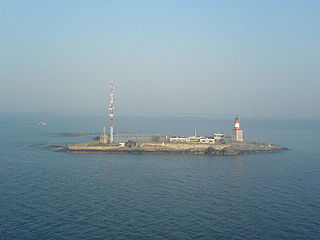
Harmaja is an island and a lighthouse outside Helsinki, south of the Suomenlinna sea fortress. The island has been functioning as a landmark since the 16th century. A landmark structure was built on the island in the 18th century and a light house in 1883. The first lighthouse was only 7.3 m high and it soon proved to be too low. In 1900 the height was doubled by creating a rectangular brick building on a granite base. A large foghorn alerted ships in fog and in bad visibility. Harmaja received the world's first directed and undirected radio beacon in 1936. The lighthouse is fully automated today.
47. Viikin puulajipuisto
The Viikki Arboretum, or Viikki Tree Species Park, is part of Helsinki's Vanhankaupunginlahti and Viikki outdoor and recreational areas. The arboretum was founded in 1969 for research and teaching in dendrology at the Faculty of Agriculture and Forestry of the University of Helsinki. It is led by a joint management team of the University of Helsinki and the City of Helsinki.
48. Taivaskallio
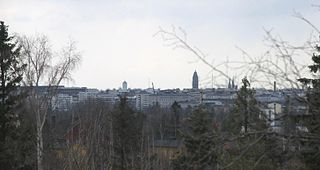
Taivaskallio is a 57.2-metre-high hill in Käpylä, Helsinki, in the area bounded by Pohjolankadu, Panuntie, the main railway and Käpyläntie. Most of it is parkland, but there is also a small residential area on its eastern slope. From 1905 to 1946, Taivaskallio was the highest terrain point in Helsinki. Taivaskallio has been known as a place name for a long time; From the time of the rural municipality of Helsinki in the 1700s, there is a mention of Himlaberget, also Högberget. At the northern end of Taivaskallio there is a post-glacial lake Ancylus embankment at an altitude of about 45 metres and a barrier on the shore of the Litorina Sea at a height of 35 metres, as well as two boulders. At the top of the cliff there is a small dammed pond into which water is discharged for the summer season. The pond is home to a protected population of newts.
49. Helsingin Siion-seurakunta
Helsinki Zion Church is a Pentecostal revival church in Töölö, Helsinki. It has about 500 members. The Zion Church is based on believers in Jesus who believe in the Bible as such and strive to apply it in their lives.
50. Myllypuron vesitorni
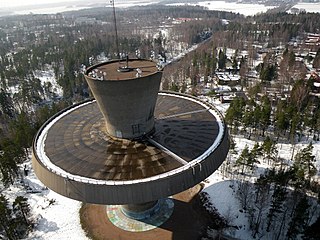
The Myllypuro water tower is located in the Vartiokylä district of Helsinki in the Myllypuro sub-area north of Viilarintie. It was completed in 1965. The water tower was designed by architect Bertel Saarnio and structural design by Insinööritoimisto P. Simula. The builder was Silta ja Satama Oy.
51. Rinkeli
The Rinkeli is an Italian-made Ferris wheel that replaced the old Helsinki wheel in the 2006 season in Linnanmäki. The rinkeli is about 35 metres high, which is 11 metres higher than its predecessor. The machine has 24 gondolas and can accommodate up to 144 passengers at the same time. In an hour, the capacity of the device is about 1, 700 passengers. Rinkeli got its name in a public vote that circulated on the Linnanmäki website in winter 2005–2006. Work on the Ferris wheel began in mid-March and it was commissioned when the amusement park opened on Friday, April 28, 2006.
52. Kallio Church
Kallio Church is a Lutheran church in the Kallio district of Helsinki, Finland. It was designed by Lars Sonck and represents National Romanticism with Art Nouveau influences. The National Romantic style appears in the use of traditional Finnish materials and in the church's massive, gray granite body, as well as in nature-inspired colours and decorative motifs.
53. Holy Trinity Church
The Holy Trinity Church is a Finnish Orthodox Church located in the Kruununhaka district of Helsinki, on the corner of Unioninkatu and Rauhankatu. The church was built in the neo-classical style in 1826 under the direction of the architect Carl Ludvig Engel, and was dedicated and opened in the following year. The Holy Trinity services the city's orthodox community with Divine Liturgy held in both Church Slavic and Finnish.
54. Merkki
Media Museum and Archives The sign is a special museum located in the former premises of Helsingin Sanomat on Ludviginkatu in Kaartinkaupunki, Helsinki. It is part of the Helsingin Sanomat Foundation.
Wikipedia: Median museo ja arkisto Merkki (FI), Facebook, Website
55. Malminkartano Hill
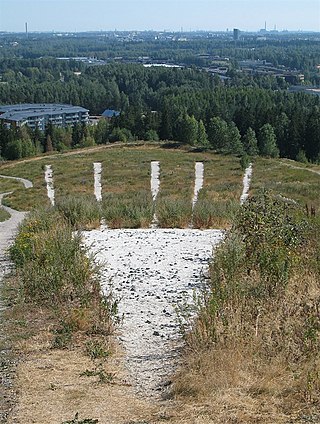
Malminkartanonhuippu is an artificial hill in the district of Malminkartano in Helsinki, Finland. It is located near to the Vihti Road and the Myyrmäki district of Vantaa. With a height of approximately 90 meters above sea level, it is the highest point in the city of Helsinki. The view from the top gives an uninterrupted 360° panorama in all directions, for those who have climbed the 347 steps.
56. Museum of Finnish Architecture
The Museum of Finnish Architecture is an architectural museum in Helsinki, Finland. Established in 1956, it is the second oldest museum of its kind devoted specifically to architecture. The museum was founded on the basis of the photographic collection of the Finnish Association of Architects (SAFA), which was established in 1949.
Wikipedia: Museum of Finnish Architecture (EN), Website, Tripadvisor
57. Burgher's house
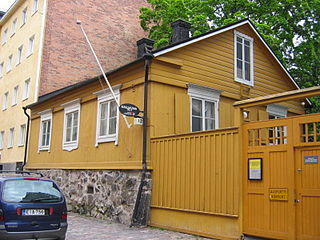
The Spraymaster's House is a wooden building in Kruununhaka, completed no later than 1818, which is the oldest stationary wooden house in the Helsinki city centre. Alexander Wickholm, who worked as a spray master, bought it as an apartment for his family in 1859. The building is one of the offices of the Helsinki City Museum, and it has been restored to showcase the home life of a family of civil servants in the 1860s. The property includes a one-storey main building and a courtyard building, but at one time there was also a stable, barn, wagon shed and woodshed on the plot. These buildings were demolished in 1905 and replaced by a three-storey stone house. The courtyard building has been used as a sauna, baking room and living rooms. Originally, the main building was painted with red soil, but when Wickholm bought the house, it had already been painted ochre yellow.
58. Fila Church Helsinki
Fila Church Helsinki, full name Helsingin Filadelfia Parish, is a Finnish and English-speaking Pentecostal church in Kamppi, Helsinki. The parish was founded as a bilingual congregation in 1920. Helsinki Philadelphia is the second oldest Pentecostal church in Finland.
59. Östersundomin kirkko
Östersundom or Itäsalmi Church is a church in Helsinki, which before 2009 belonged to Sipoo. The church is the oldest in present-day Helsinki. At the beginning of 2009, Östersundom Church was transferred to Sipoo from the Finnish and Swedish parishes to Mikaeli Parish in Helsinki and Matthew församling when the southwestern parts of Sipoo became part of Helsinki.
60. Musiikkimuseo FAME
Music Museum Fame – Finnish Music Hall of Fame is a music museum in the Tripla shopping centre in Central Pasila in Helsinki. The entrance to the museum premises is from the outside from the Pasilansilta bridge side and from the inside from the third floor of Tripla.
61. Hakavuoren kirkko
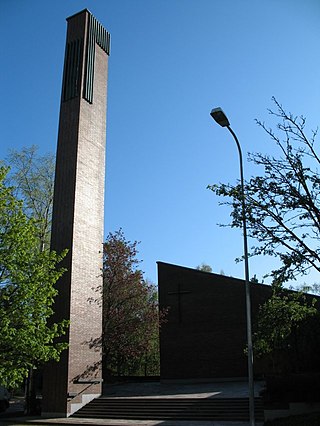
Hakavuori Church is a disused red-brick church building of Haaga Parish in Pohjois-Haaga, Helsinki. It was in operation from 1963 to 2016. The name of the church was changed to Hakavuori Church in 1966, when the Hakavuori parish was founded. Later, Hakavuori parish was merged with Huopalahti parish to form Haaga parish.
62. Spring / UKK Monument
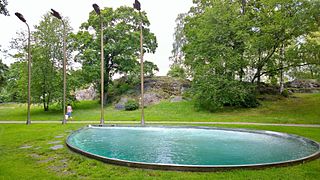
The Urho Kekkonen Memorial or Lähde is a monument dedicated to President Urho Kekkonen (1900–1986) in Helsinki's Hakasalmi Park, next to Finlandia Hall. A design competition was held for the monument in 1997, which was won by sculptor Pekka Jylhä with his proposal Lähde. The work was unveiled on the centenary of Kekkonen's birth on 3 September 2000.
Wikipedia: Urho Kekkosen muistomerkki (Helsinki) (FI), Website
63. Villa Gyllenberg
Villa Gyllenberg is a private art and house museum owned by the Signe and Ane Gyllenberg Foundation, located in western Helsinki on the southwest shore of Kuusisaari. The address of the museum is Kuusisaarenpolku 11.
64. Tram Museum
The Tram Museum or Tram Museum is a special museum operating under the Helsinki City Museum in Taka-Töölö, Helsinki. The museum presents the history of tram traffic in Helsinki. It is housed in Helsinki's oldest tram hall, dating back to 1900, designed by architect Waldemar Aspelin.
65. Vuosaarenhuippu
Vuosaarenhuippu is a recreational area in the northern part of Vuosaari in eastern Helsinki, Finland. Earlier it was the Vuosaari dumping ground and a place where land masses from construction sites were deposited. Through ecological restoration the area has been turned into a natural-like environment, the scale of which is unprecedented in the history of Helsinki. A large number of both flora and fauna inhabit the area. There are paths connecting the area to the nearby Mustavuori protected area.
66. Panoraama
Panoraama is a 53 metres (174 ft) tall gyro tower at the Linnanmäki amusement park in Helsinki, Finland. Its observation deck rises about 84 metres (276 ft) above sea level. Panoraama was built in 1987 by the Swiss Intamin and offers capacity for 400 visitors per hour. It was originally known as Panorama, but the name was changed to Panoraama when Linnanmäki changed the naming policy for its rides and started to use only words that are correct in the Finnish language.
67. Unelma
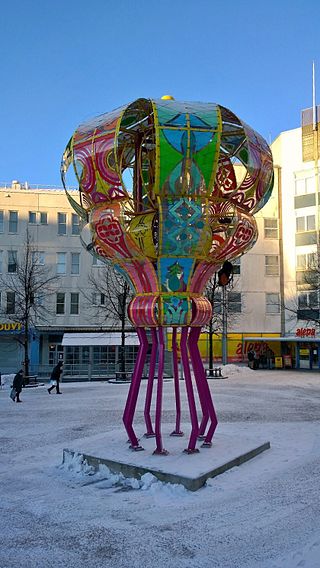
The Dream is a movable public sculpture by visual artist Oona Tikkaoja. It was first launched in Kallio, Helsinki, near the metro station on Siltasaarenkatu in August 2012. The sculpture was replaced at Kannelmäki Sitratori, where it was unveiled in November 2013. The work is multicoloured and somewhat reminiscent of a hot air balloon or carousel and includes a Savonius rotor powered by wind power.
68. Mikaelinkirkko
Mikaelinkirkko is the headquarters of Mikaeli Parish in Kontula, Helsinki. The modernist church was inaugurated on 7 May 1988. The church hall has 300 seats and the parish hall 250. Mikaelinkirkko is located on Emännänpolku, right next to the Kontula shopping centre.
69. Paavo Nurmi
The Paavo nurmi statue is a whole-body sculpture of runner Paavo Nurmi, the most successful Olympic athlete in Finland, made by sculptor Wäinö Aaltonen. The bronze sculpture was made in 1925 and there have been four additional casts of it. The statue has become a symbol for Finnish sport and the independent Finnish nation as well as an envoy of the image of Finland.
70. Varsapuistikko
Varsapuistikko is located in Helsinki, in a triangle between Kaisaniemenkatu, Yrjö-Koskisen katu and Unioninkatu, near the Forest House. It was once part of Kaisaniemi Park, but was separated from it when Kaisaniemenkatu was built through the park. The park takes its name from Emil Cedercreutz's sculpture Mother's Love, completed in 1928, which depicts a horse foal and its dam.
71. Kannelmäki Church
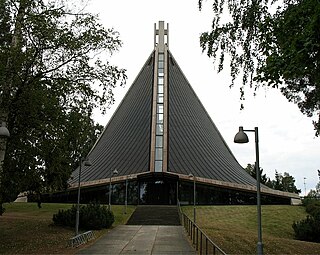
Kannelmäki Church is a church building inaugurated on 1 September 1968 and designed by architects Marjatta and Martti Jaatinen in the Kannelmäki sub-district of the Kaarela district of northwestern Helsinki.
72. Käpylän kirkko
Käpylä Church is a church in Käpylä, Helsinki, on Metsolantie. It was designed by architect Eero Ilmari Sutinen and built between 1929 and 1930. It has elements of early functionalism, but in terms of details it still represents classicism. The church seats about 200.
73. Ukko
Ukko is a roller coaster located in Linnanmäki Amusement Park in Helsinki. The device, called Skyloop, is manufactured by German Maurer Söhne. The track was opened to the public on the 61st anniversary of Linnanmäki on 27 May 2011.
74. Lastenlehto
Children's Grove is a triangular park in Kamppi, Helsinki. It is bordered by Lapinlahdenkatu, Lapinrinne and Ruoholahdenkatu. The name of the park derives from the children's home of the Lady's Folk Association that was once located nearby.
75. Asentajanpuisto
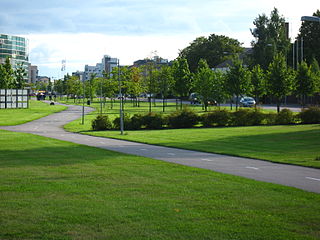
Asentajanpuisto is one of the parks located in the middle of Helsinki's Herttoniemi business district. The strip-like park is surrounded by Laivalahti, Carpenter, Mekaanikon, and Asentajankatu. Asentajanpuisto and Valurinpuisto form a narrow, 850-metre-long park axis in the area of the old Herttoniemi harbour railway. When the Port of Herttoniemi and the railway were removed, the planner's vision was to create a park in the middle of the industrial area that would improve the milieu and serve as a lifeline for the workplace area and a route for pedestrian and bicycle traffic. The park is a compositional and traffic extension to the main axis of Herttoniemenranta.
76. Mannerheim Museum
The Mannerheim Museum is located in Helsinki, Finland. It is dedicated to preserving and displaying items related to the life and times of Marshal C. G. E. Mannerheim, a Finnish statesman and military officer. The Mannerheim Museum is located on top of a hill in a prestigious residential area next to the Kaivopuisto park in Helsinki. The building was the home of Mannerheim from 1924 to 1951. With the exception of a few rooms that have been converted for exhibition purposes, his home has been preserved in its original state.
77. Kluuvinlahti Fossils
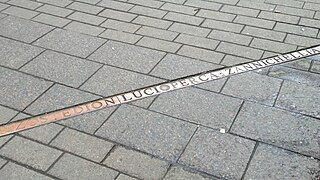
Kluuvinlahti fossils is a work of art by Tuula Närhinen completed in 2003 on Aleksanterinkatu in Helsinki. The work features recessed 8.5-centimetre-wide copper strips running across the sidewalks. They bear the Latin names of plants and animals on the grassy seashore.
Wikipedia: Kluuvinlahden fossiilit (taideteos) (FI), Website
78. Matteuksenkirkko
St. Matthew's Church or Itäkeskus Church is a church completed in 1985 in Vartiokylä, Helsinki, next to the Itis shopping centre. The church, designed by Veli-Pekka Tuominen and Stefan Ahlman, was completed in 1985 and was previously the main church of the Vartiokylä parish until the parish abandoned the building in 2016 and switched to using Vartiokylä Church and Puotila Chapel. Today, the church serves as the main church of the Swedish-speaking congregation of St. Matthew. The church was consecrated by Bishop Samuel Lehtonen on February 24, 1985.
79. Töölön kirkko
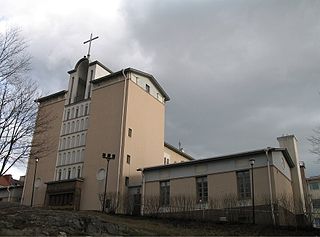
Töölö Church is a Lutheran church in the Taka-Töölö district of Helsinki, Finland. The building represents Nordic Classicism and was designed by Hilding Ekelund following an architectural competition. Completed in 1930, it originally served as a parish center and was dedicated as a church when Töölö parish was created in 1941.
80. The Hotel and Restaurant Museum
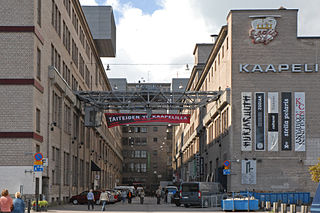
The Hotel and Restaurant Museum specializes in the history of Finnish hotels, restaurants, cafés, tourism and culinary culture. The museum is located in Kaapelitehdas, Helsinki, Finland. The museum was first opened in 1971 but has operated in its present premises since 1993. The museums collection includes about 20,000 artifacts and other objects from restaurants, bars, diners, spas and hotels. Museum's archives include about 38,000 photographs, menus and other documents. Museum also takes care of the Alko store museum's collection.
81. Theatre Museum
The Theatre Museum is the national museum responsible for performing arts, especially theatre and dance, operating at the Cable Factory in Salmisaari, Helsinki, and its cooperation network consists of the theatre field. The focus area of the museum is theatre education.
82. Savoy Theatre
Savoy Theatre is a guest theatre for Finnish and foreign performers in Helsinki's Kaartinkaupunki. The theatre is connected to the Savoy restaurant. It is especially known as a concert venue for world music. Savoy Theatre is one of the locations of the Helsinki Cultural Centre.
83. Lasipalatsin salavan kanto
The Lasipalatsi salava was a large salava that was originally planted in 1830 in Kamppi, Helsinki, north of the Turku Barracks under construction at the time, on present-day Salomonkatu. Salava was protected in 1924 as a natural monument. It has often been called Helsinki's best-known tree. The original salava fell in a storm in late 2003, but before that, cuttings had been taken from it, and in 2011 one of them was planted on the former site of the fallen salava.
84. Ehrensvärd Museum
The Ehrensvärd Museum is a specialised museum located in Suomenlinna. The museum is located in Susisaari Castle Yard. It is housed in the former residence of the commandant of the fortress. The museum was opened in 1930. The museum has been decorated to tell what the residence of the chief of the fortress looked like in the 1700s. On display are portraits, weapons and scale models of ships of the archipelago fleet. In front of the museum is the tomb of Augustin Ehrensvärd. The museum is subordinate to the Governing Body of Suomenlinna and is maintained by the Ehrensvärd Society, which founded the museum in 1927.
85. The Lantern Carriers
Lyhdynkantajat is a group of sculptures at the main entrance to the Helsinki Central Station in Helsinki, Finland. The sculptures were designed by Emil Wikström and completed in 1914. Lyhdynkantajat is part of the façade of the Art Nouveau station designed by Eliel Saarinen.
86. Kumtähden kenttä
Kumtähti Airport is a small park area in Toukola, Helsinki. It is located between Hämeentie and Gustav Vasa road north of their branching point, about three kilometers north-northeast of the centre of Helsinki. Nearby on the other side of Gustav Vaasa road is now the Kumpula campus of the University of Helsinki.
87. Olaus Petri Church
Olaus Petri Church is a church building in Helsinki, located in the Etu-Töölö district of Minervakatu. The church belongs to the Olaus Petri Parish in Helsinki, which is part of the Diocese of Porvoo. Before 2007, the congregation was part of the Church of Sweden.
88. Kiikkujat

Kiikkujat is a sculpture by Taisto Martiskainen in front of Porolahti Comprehensive School in Roihuvuori, Helsinki. It is also known as Recess. The statue was created on the basis of a competition, but the nudity of the winning work aroused opposition and there was a desire to change it. Only the authoritative intervention of Wäinö Aaltonen secured the realisation of the artist's vision. The statue is made of bronze and was completed in 1964. Wäinö Aaltonen considered the Kiikkujat statue to be the best statue in Helsinki. When Martiskainen won the sculpture competition, he was an 18-year-old sculpture student.
89. Tapio Wirkkala park
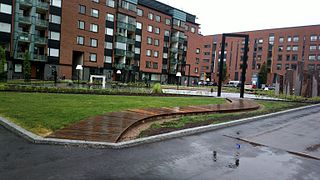
Tapio Wirkkala Park is an art park in Arabianranta, Helsinki. It is named after designer Tapio Wirkkala. The park was opened on 22 October 2012 and is one of the City of Helsinki's own World Design Capital Helsinki 2012 projects. The park was opened by Pekka Sauri, Deputy Mayor of Helsinki.
90. Mäntymäki
Mäntymäki is a rocky and forested hill in Helsinki, on the southern edge of the Zoo area near Töölönlahti. Helsinginkatu runs past it to the south and east, and Mäntymäentie to the north. On the west side in front of the hill is a wide square, the Mäntymäki field.
91. Mikael Agricola Church
Mikael Agricola Church is a Lutheran church located in the Punavuori district of Helsinki, Finland. It was designed by Lars Sonck and built between 1933 and 1935. The church was inaugurated on 14 April 1935. It is named after bishop Mikael Agricola.
92. Sinebrychoff Art Museum
The Sinebrychoff Art Museum is an art museum located on Bulevardi in Helsinki, Finland. The museum exhibits the old European art collections of the Finnish National Gallery. In addition, half of the museum acts as a historic house museum, displaying the 19th century estate of the Sinebrychoff family.
93. Neptunus
The Pajamäki Solar System Scale Model is a scale model of the Solar System built in Helsinki and partly in Espoo, Finland in 1992. Its scale is 1:1 000, i.e. one to one billion, so that 1 millimeter in the model corresponds to 1 000 kilometers in the actual Solar System. The coordinates given for the model are those for the Sun in Patterinmäki.
94. Topelius and children
Topelius and the Children is a monument to Zacharias Topelius in Koulupuistikko in Kaartinkaupunki, Helsinki. The park is bordered by Korkeavuorenkatu, Merimiehenkatu, Yrjönkatu and Ratakatu. The sculpture was designed by Ville Vallgren and was erected in 1932.
95. Lightbringer - National Memorial to the Winter War
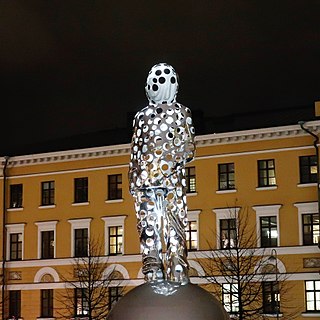
The National Memorial to the Winter War, or Bringer of Light, is a steel statue located on Kasarmitori Square in Helsinki, completed in 2017. The monument is designed by sculptor Pekka Kauhanen and is a soldier about 10 metres high. It is the largest steel statue in Finland. Kauhanen won a design competition organised by the Ministry of Culture in 2013.
Wikipedia: Talvisodan kansallinen muistomerkki (FI), Website
96. Helsingin Rauhanyhdistys
The Helsinki Peace Society is a prayer room and activity house located in Oulunkylä, Helsinki. It represents the conservative Laestadian revival movement, whose umbrella organisation is the Central Association of Finnish Peace Societies. At the office building of the Helsinki Peace Society, children, young people, older people, families and pensioners meet weekly in joint clubs. The Peace Society was first registered in Finland on July 2, 1888. Approximately 1,500 club guests regularly participate in the activities.
97. Tauno Palon puisto
Tauno Palo Park is located in the Kallio district of Helsinki. In the north, it borders Helsinginkatu, from where it is separated by a low stone wall. To the south and west, the park area rises into a slope with an asphalt-paved staircase/embankment for pedestrians, which curves southwest towards the intersection of Alppikatu and Wallininkatu. To the east, the park borders the courtyard of a residential apartment building. Tram line 8 runs past the park along Helsinginkatu. The park is located approximately halfway between the stops of Linnanmäki and Urheilutalo.
98. Memorial to the Estonian volunteers
The Estonian Visitors' Hero's Tomb is a joint grave of the Finnish volunteer troops of the Estonian War of Independence located in Helsinki's Old Church Park, where approximately one fifth of the Finnish heroic dead of the war rest.
99. Bear on Anthill
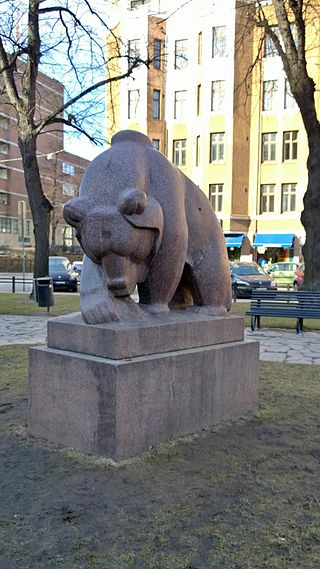
Mesipalm on an anthill is a sculpture made of red granite by Finnish sculptor Jussi Mäntynen (1886–1978) from 1931. It is located in Karhupuisto Park in Kallio, Helsinki. The sculpture depicts a bear rooting for an anthill.
100. Kartta
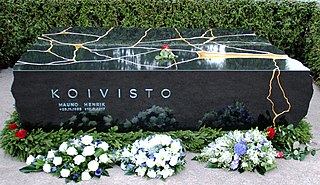
The map is a memorial to President Mauno Koivisto, designed by visual artist Perttu Saksa, at Hietaniemi Cemetery in Helsinki. It is black diabase with gilded lines. Germany won the design competition for the grave monument.
Share
How likely are you to recommend us?
Disclaimer Please be aware of your surroundings and do not enter private property. We are not liable for any damages that occur during the tours.
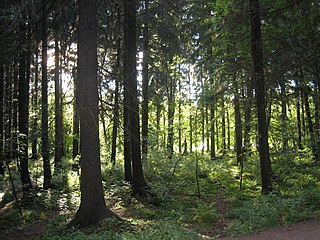
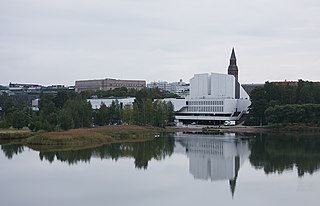
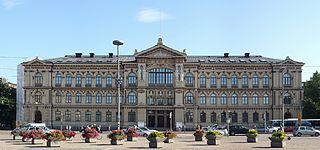
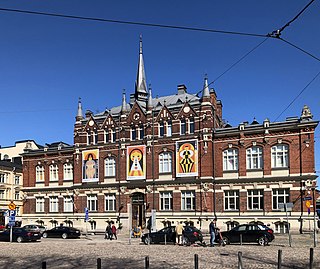
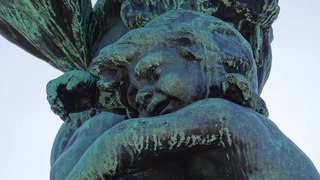
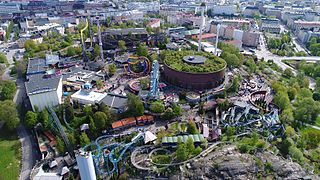
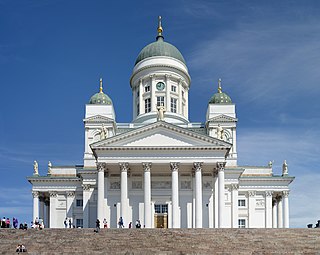
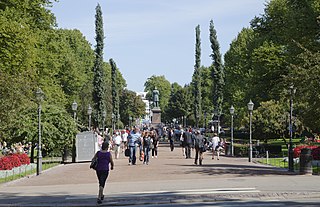
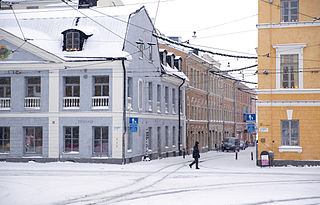
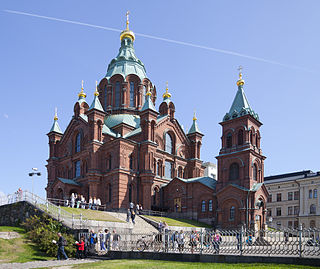
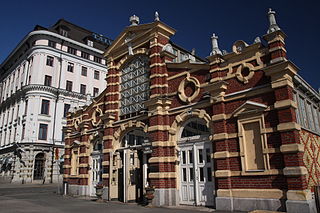
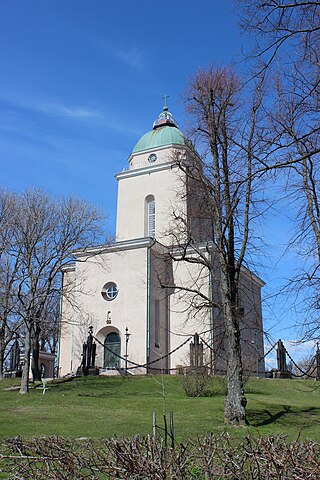
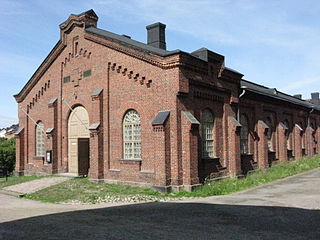
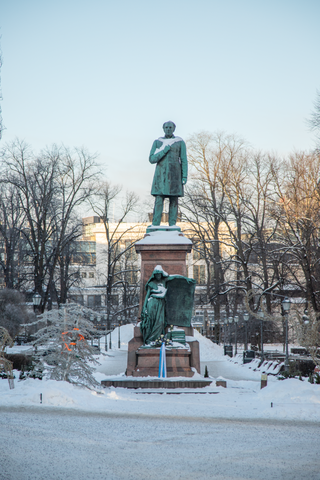

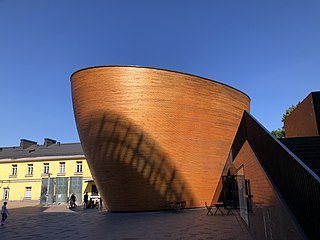
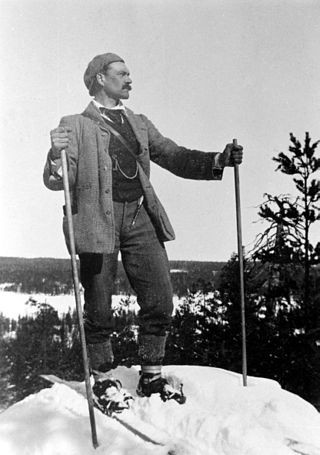
.jpg)
